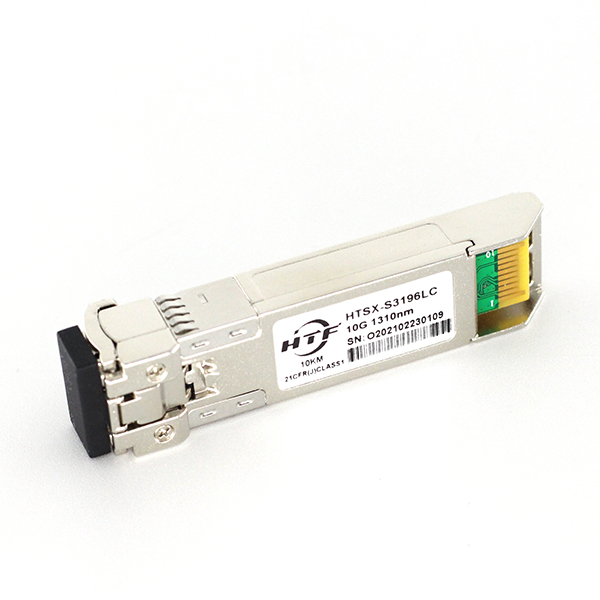1.Use SFP+ optical module to interconnect with XFP optical module between two switches, and use OM3 fiber jumper to form a 10G channel. As an optical transceiver module for 10G data transmission, 10G connection between SFP+ optical module and XFP optical module is feasible. If the optical modules on both sides of the optical fiber link are at 10 Gigabit rates, if one side is an SFP+ module and the other is an XFP module, at the same wavelength and signal rate, the XFP optical module and the SFP+ optical module are compatible (the transmission distance is the same, the wavelength is the same , such as 10G dual-fiber optical modules are 300M, 10KM, 20KM, 40km or 80km, wavelength 1310nm, 1550nm, etc.), you can directly connect to communication. , More specifically, XFP optical modules and SFP+ optical modules actually have the same specification standards. But it is worth noting that SFP+ optical modules and XFP optical modules are not interchangeable.
2,
SFP+ optical module is a 10G hot-pluggable module, an optical transceiver independent of communication protocol, usually the wavelength of transmitted light is 850nm, 1310nm or 1550nm, used for 10G bps SONET/SDH, Fibre Channel, gigabit Ethernet, 10 gigabit Ethernet and other applications also include DWDM links. XFP contains a digital diagnostic module similar to the SFF-8472, but expanded to provide powerful diagnostic tools. The small size, low cost, and multi-application characteristics of SFP+ optical modules are more suitable for the needs of high-density data centers. SFP+ 10G optical modules meet the high-density requirements of equipment for optical modules by virtue of their small size and low cost, and have now replaced 10G optical modules. XFP optical modules have become the mainstream of the 10G market.

3.
The XFP optical module is a hot-swappable serial-serial optical transceiver with a small circuit area. It consists of three parts: transmitting, receiving, memory and diagnosis. The transmitting part includes TOSA and LD drive circuits. The receiving part is composed of ROSA and the main amplifier. The Flash/EE unit is mainly used to store information such as module type, interface form, transmission characteristics, product model and manufacturing date. In addition to storing the above information, the XFP optical module with digital diagnostic monitoring function , as well as a microcontroller and a series of digital-to-analog and analog-to-digital conversion interfaces to monitor five parameters of the optical module in real time, namely temperature, voltage, laser bias current, output optical power and input optical power. It can support SONET OC-192, 10Gbps Ethernet, 10Gbps Fibre Channel and G709 links, mostly using LC interface. The multi-source agreement (MSA) of XFP directly adopts the XFI interface specification to define the power interface, which fully meets the limitation of the SDH optical transmission network range. Compared with 1X9 and SFP modules, XFP has higher transmission rate and transmission capacity, which also expands the application scope of Ethernet to metropolitan area network and wide area network.



